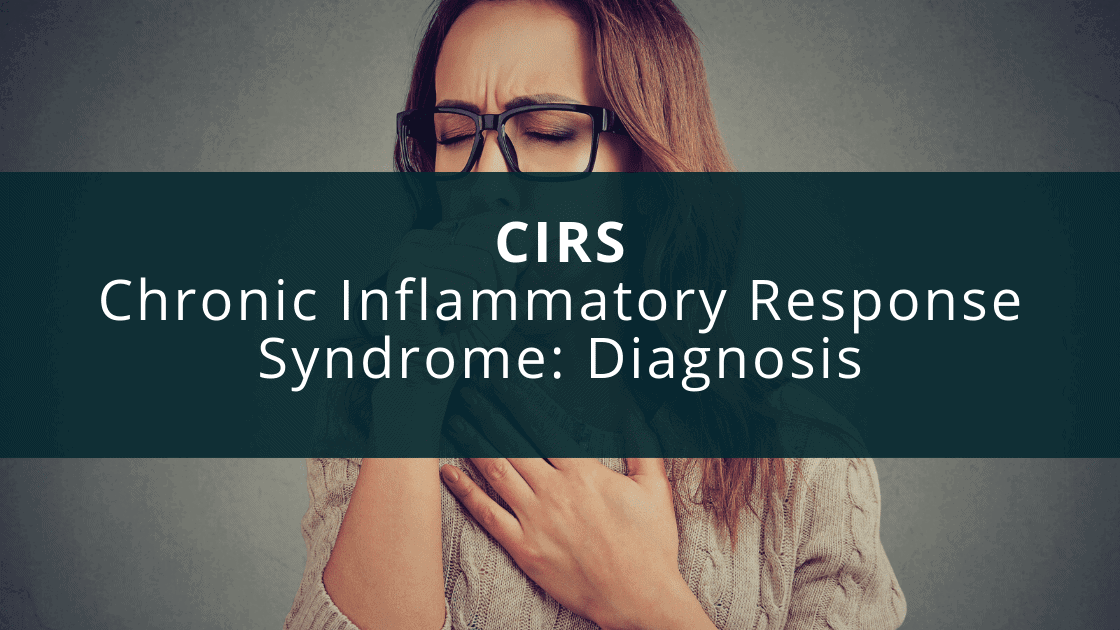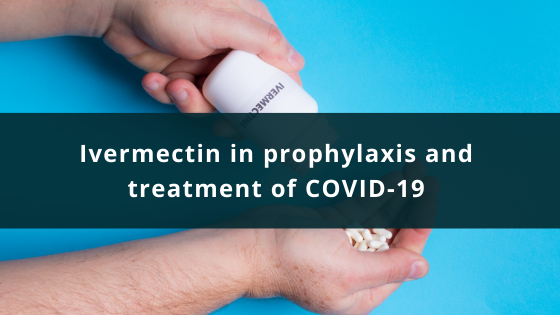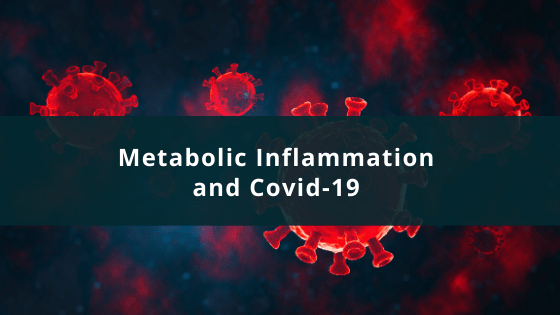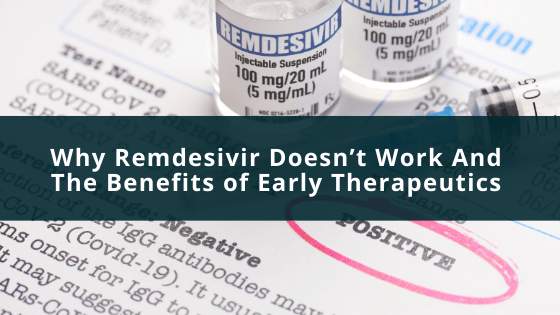CIRS: Causes, Diagnosis & Symptoms
As can be seen from Dr. Able’s article on CIRS it is multi-factorial taking in multiple systems leading to a host of unexplainable symptoms. This article is dedicated to showing the type of testing that is involved in assisting in making the diagnosis of CIRS and some of the reasoning behind their findings. It is my belief that this type of work will help many in the future deal with many of their symptoms that for many years have been unexplained.
History of Chronic Inflammatory Response Syndrome:
The chronic inflammatory response syndrome is an illness pioneered by Dr. Ritchie Shoemaker. In 1997 patients in Maryland were exposed, during a fish killing caused by a dinoflagellate called Pfiesteria, came down with a multisystem illness. This was dominated by muscular symptoms, confusion and diarrhea along with others. To treat the patient’s diarrhea, Dr. Shoemaker gave them cholestyramine, which is a drug developed for treatment of cholesterol, however, had an off-label use for diarrhea. The patient’s diarrhea got better but also their multisystem symptoms. This began Dr. Shoemaker’s desire to delve further into this illness and see why cholestyramine helped so many. Approximately 20% of these patients, however, went on to develop chronic illness. This has now been ascribed to a defect in the major histocompatibility complex that 20-25% of the population has. Usually when our body is exposed to a pathogen, it deals with it in a rather quick way with what is called our innate immune system. After this, however, the “picture” of that pathogen is handed off to the second and more broad-spectrum aspect of our immune system called the adaptive immune system. In patients that go on to develop this chronic disease, these are the ones that have the defect in the major histocompatibility complex discussed above. A lot of the points below are technical stuff Dr. Pugliese and I understand, not necessarily for you to understand, but are things we look at and consider in diagnosing your illness. He and I continue to look for reasons behind your illness and how to correct it.
This abnormality in the innate immune system causes significant inflammation in the brain, leading to many downstream negative effects. There are numerous other diagnoses that patients have such as POTS, chronic fatigue, fibromyalgia, memory loss, joint pains, shortness of breath, pulmonary hypertension, frequent urination, abdominal pain and diarrhea and there also may be unusual electrical type symptoms. Many patients have also been diagnosed with chronic fatigue syndrome, attention deficit disorder, hypochondriasis, posttraumatic stress disorder, allergies, anxiety, depression, or just faking it.
If a patient has widespread otherwise unexplained symptoms, has seen multiple providers without adequate answers, is on multiple medications for multiple different diagnoses other than the usual hypertension, diabetes, etc., this patient likely should be evaluated for chronic inflammatory response syndrome. And, even if the exposure goes away, the syndrome may continue because of this upregulation in the immune system going on unchecked. It is important to seek a practitioner out that is familiar with this because through the work of Dr.
Shoemaker and Dr. Heyman as well as others, this now is a disease with a potential cure, certainly a significant improvement in overall symptoms.
Chronic Inflammatory Response Syndrome Symptoms
Overall, there are 37 different symptoms ascribed to this, but have been grouped into the 13 cluster groups as below:
- Fatigue.
- Weakness, assimilation, aching, headache, light sensitivity.
- Memory, word finding difficulties.
- Concentration
- Joint pain, morning stiffness, cramps.
- Unusual skin sensations, tingling.
- Shortness of breath, sinus congestion.
- Cough, thirst, confusion.
- Appetite swings, body temperature regulation, urinary frequency.
- Red eyes, blurred vision, sweats, mood swings, ice pick pains.
- Abdominal pain, diarrhea, numbness.
- Tearing, disorientation, metallic taste.
- Static shocks, vertigo.
If you have 8 or more of these, (you only need one in the cluster), there is a 95% chance that you have this illness. If so, go to survivingmold.com and take the VCS, (visual contrast sensitivity test). If this is failed, there is a 98.5% chance that you are dealing with this illness.
During your initial evaluation. You will need a complete history and physical examination along with the usual labs to rule out other diagnoses. After this, specialized testing will be done that takes a look at the major histocompatibility complex genes that were discussed above. Numerous other markers of neuro inflammation will be tested along with clotting studies and other tests which will be followed during the treatment course to ensure normalization.
A list below includes lab abnormalities along with how some of the things that these potential abnormal labs affect us: This is for information only. Has your physician tested any of these tests? If not, they are probably not aware of this syndrome.
CIRS LABS
VCS:
Best test of functional vision.
Diagnostic at baseline essential for follow-up. Especially hyperacute.
Correlates with measured perfusion. Neurologic function nerves/vision. Elimination near, far, static, motion, peripheral vision.
MMP-9 Range: 85-332
Delivers inflammatory elements out of blood, across two endothelial membranes, across basement membrane into the subintimal space of tissue (brain, nerve, muscle, lung, blood). Hence, can see widespread destruction.
It has been implicated in pathogenesis of COPD by destruction of lung elastin, in rheumatoid
arthritis, atherosclerosis, cardiomyopathy, and abdominal aortic aneurysm.
Bridges BBB. Breaks down connective tissue.
ACTH/Cortisol Abnormal in approximately 60% of patients
ACTH Range: 8-37
Cortisol AM Range: 4.3-22.4
Absolute or relative ACTH dysregulation may be seen:
Absolute high: ACTH greater than 45 or cortisol greater than 21
Absolute low: ACTH less than 5 or cortisol less than 4
Relative: ACTH was less than 10, when cortisol was less than 7, Two-tiered test
Relative: ACTH was greater than 15 when cortisol was greater than 16. Two-tiered test.
The basis is not adrenal insufficiency or Cushing’s. The basis is disruption in melanocortin physiology. Risk of suppression of ACTH is dramatically increased in CIRS because of low MSH.
If MSH low, one cannot rely on ACTH stimulation test.
Correct the source of low cortisol or low ACTH first
Rarely is prescription needed.
Coming off cortisol is hard for those with low MSH.
Oral steroids relatively contraindicated. Liberal Rx for prednisone, Medrol dose packs, Depo-Medrol should be avoided. Topical steroids may be used, but the highest potency topical that should be used is triamcinolone. Joint injections are acceptable.
ADH/Osmolality Abnormal in approximately 80% of patients
Range: ADH 1-13.3 pg/ml
Range: Osmolality 280-300
Dysregulations
Absolute high: ADH, greater than 13, or osmolality greater than 300
Absolute low: ADH less than 5 or osmolality less than 275
Relative: ADH was less than 2.2. When osmolality was 292-300, 2-tiered test
Relative: ADH was greater than 4 when osmolality was 275-278
ADH (Anti-diuretic Hormone) stimulates cells in renal tubules to reabsorb free water in response to rising osmolality (saltiness) of blood. Low MSH is associated with blunted ADH response to rising osmolality = loss of free water. Dysregulation of ADH/Osmolality is quite common (80% in low MSH) with intravascular dehydration as a concomitant. Salt may be excreted to skin causing “static shocks”, pee shocks.
Chronic migraines in CIRS is usually ADH dysregulation.
POTS (Postural Orthostatic Tachycardia Syndrome) usually is increased PASP (Pulmonary Artery Systolic Pressure) and ADH dysregulation. Treatment is with DDAVP 0.2 mg QOHS, monitor osmolality and electrolytes in 10 days.
Patients with acquired von Willebrand bleeding need to carry DDAVP with them when they travel. Record daily weights. Look for nocturia and polyuria to stabilize in one week.
MSH Range: 35-81
Anti-inflammatory, neuro regulatory peptide hormone.
Involved in weight, appetite, mood, circadian rhythms, mucous membranes defenses, pulmonary responses, blood-based immunocyte responses, gut tight junctions. (Don’t say leaky gut in face of low MSH.)
Antigliadin antibodies. Range: 0-19
If elevated, gluten-free diet. 3 months and recheck.
MSH regulates tight junctions in gut. If Serum positive, check TTG-IgA to r/o celiac disease.
Androgen deficiency. Is present in about 40% of patients
Usually stabilize on their own with treatment protocol.
Leptin Recalcitrant weight gain.
Range: 0.5–13.8 men
Range: 1.1–27.7, women
C3a Quest: Range: 55–486
C4a: Quest: Range: 0–2830
Highly involved with mast cell activation syndrome. Dermatographia is C4a in action.
Putative anaphylatoxin. activates mast cells and basophils, increases smooth muscle contraction, vascular permeability, release of chemotactic factors. Systemic responses follow activation. Associated with cognitive defects, restrictive lung disease, hypersensitivity pneumonitis, multisystem, multi symptom illness, dominated by chronic fatigue. Re-exposure brings a rise in C4a within 4 hours in patients exposed to toxigenic fungi, 12 hours after tick bite in Lyme patients. Elevated levels of C4a are durable even though C4a is short-lived.
Produced by MASP2; can auto-activate.
VEGF: Range: 31–86.
Low VEGF should be correlated with suppressed VO2 max.
Ignore high levels until plasma levels greater than 600. Then consider octreotide scan looking for APUDoma tumor.
Increases oxygen delivery on capillary basis. Increases new blood vessel growth. In CIRS, 1/3 low, ⅓ normal, 1/3 high. Capillary hypoperfusion/hypoxia stimulates VEGF. Rising VEGF stimulates TGF beta-1, TGF beta-1 suppresses VEGF. Can be overridden by ongoing exposures. Bartonella not a player in any VEGF trend. Persistent low VEGF rare in older, worse when in younger. TGF beta-1 Range: less than 2380, greater than 5000. Symptoms appear, greater than 10,000, restrictive lung disease. Correction of fibrosis in lung, skin, liver is an important benefit of lowering TGF beta-1. Might be the single most important proteomic test. Pleotrophic: pro and anti-inflammatory.
Causes fibrosis everywhere. tremor, cognitive issues, joint symptoms may occur. Sends T-regs into tissue, interacts with tissue ROR to suppress inflammation, but if ROR low, T-regs can be plasticized into T-effector cells-increased inflammation. Especially important in interstitial lung disease. Role in aneurysm. Plasma higher in hypermobile patients.
VIP (Vasoactive Intestinal Polypeptide) Range: 23–63
First found in intestine, 75% of receptors, however, are in the lung. Anti-inflammatory, immune-
regulatory. Treatment with VIP is excellent for pulmonary hypertension, primary and acquired.
Hopkington Drug, Hopkington, Ma. Treatment is best monitored by GENIE. Level in plasma have nothing to do with level of VIP receptor 1.
Targeting PASP is a reasonable surrogate.
With Multinuclear atrophy on NeuroQuant, however may need 12 sprays/day for 6 months.
VWF von Willebrand’s factor (clotting) may be abnormal in as many as 60% of patients
Factor VIII, von Willebrand’s antigen, ristocetin associated cofactor
Values may be low (acquired vWF) –(bleeding) or high (clotting), Pulmonary embolus, PICC line clotting. Greater percent high in Post-Lyme than mold. For low, bleeding, nasal… DDAVP, usually only one tablet needed to stop hemorrhagic episode.
NeuroQuant MRI:
Another very important consequence of these actions are the effects on the brain causing either atrophy (shrinkage) or swelling (edema) to 11 areas of the brain. Interestingly, the work of Dr.
Shoemaker and Heyman is showing improvement in these areas with treatment protocols. This is the NeuroQuant MRI, which is a noncontrast MRI of the brain. The images are then measured with special software to show the areas that are either smaller or larger as above.
Significant findings differentiating disease pattern:
CIRS-WDB: Forebrain parenchyma increased, cortical gray increased, caudate decreased.
Post Lyme’s: Small putamen, large right thalamus.
Automated report on surviving mold, download report.
Lateral ventricle. Newly added
Encourage all to test. This also has different patterns based on whether this is a post Lyme patient versus a water damage to the building versus other reasons. It is giving information that we are not able to see on any lab tests.
GENIE:
In addition, we are now using transcriptomics, your blood is drawn under very strict parameters and then is sent to the lab. This is looking at how the immune system is being regulated, whether certain genes are upregulated or down regulated due to the disease process. This is also been shown to change in the positive way after treatment. It also gives us a lot of information regarding what aspects of the immune system is upregulated more than others and again, is showing very specific findings that direct us to the underlying process and how to address this.
Next month will be the final article discussing various modalities on how to treat CIRS.
CIRS Patient’s Story
Confucius said: “He who says he can and he who says he cannot are both usually right.”
Or was that Will Smith’s interpretation of Confucius words?
Either way, it is a great saying! Because it inspired me to write to you this week and remind you of importance mindset can have on you, especially when you are on your way to accomplish a certain goal.
Living a healthy lifestyle is a process… it’s not something that happens overnight. It takes patience, practice and persistence to change the way you do things…..
But it is definitely not impossible!
#1. First of all you need to set realistic expectations for yourself. Decide what you really want to change and then think about the best way to get there. Remember that change demands time, and if your goal becomes overwhelming, what do you do? Break. It. Down. In other words, set smaller, less intimidating goals and you will reach that finish line sooner than you think.
#2. Also find a partner in crime! Many studies show that when you work out with a friend or family member, you will be more motivated to go through your workout routine. Seriously, is there anything better than having fun while you work out with a friend? Or to have someone push you further and make you feel that competitive rush to do more and work harder? If you have a friend in mind and would like them to join you, have them join one of our community classes on us. Here is the link… WOD WITH US!!!
#3. If you’re in a time crunch and are left with only fifteen minutes of free time instead of an hour – well let me tell you, a lot can be done in 15 minutes! Don’t make any excuses and do what you can do in the time you have.
#4. Accept yourself the way you are and where you are. Do not compare yourself to other people and take pride in knowledge that you understand that your life can and should be better and that you are working toward achieving that. Reflect on your past decisions. Let them be lessons, never mistakes.
#5. Focus on what you can change! Because amazing things will happen when you stop worrying about things you can’t control… and take control over those things you can.
#6. And above all, stay positive and surround yourself with people who spread great vibes only.







